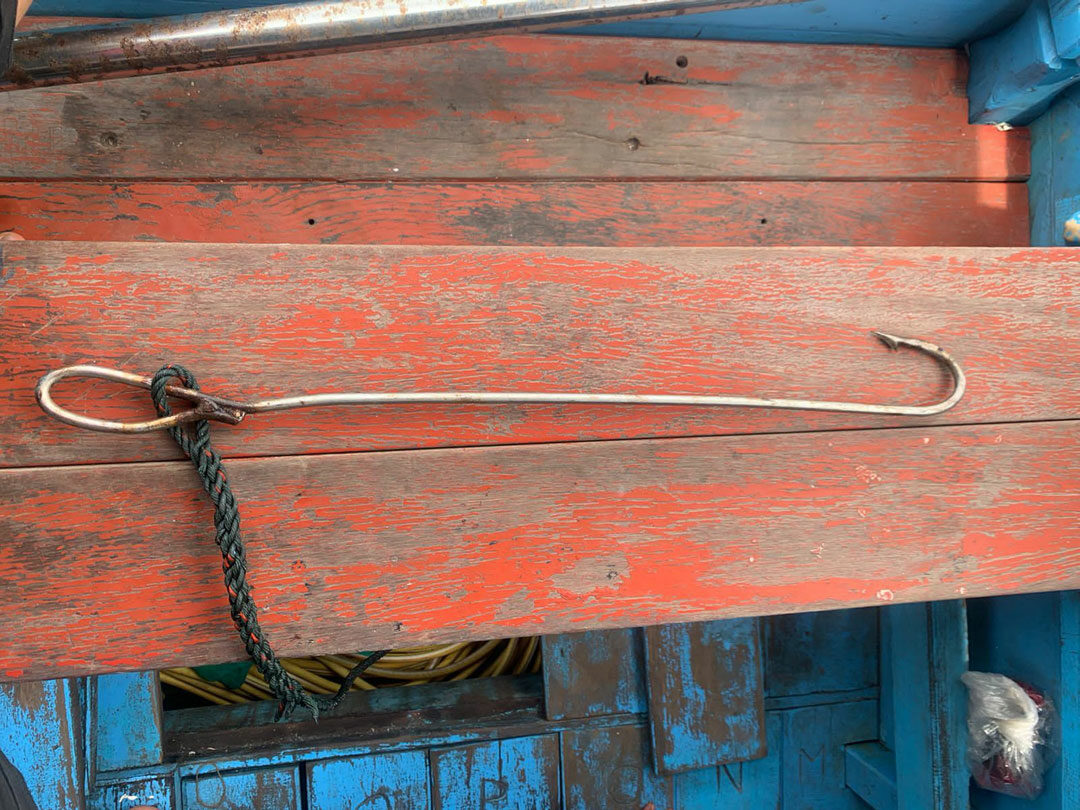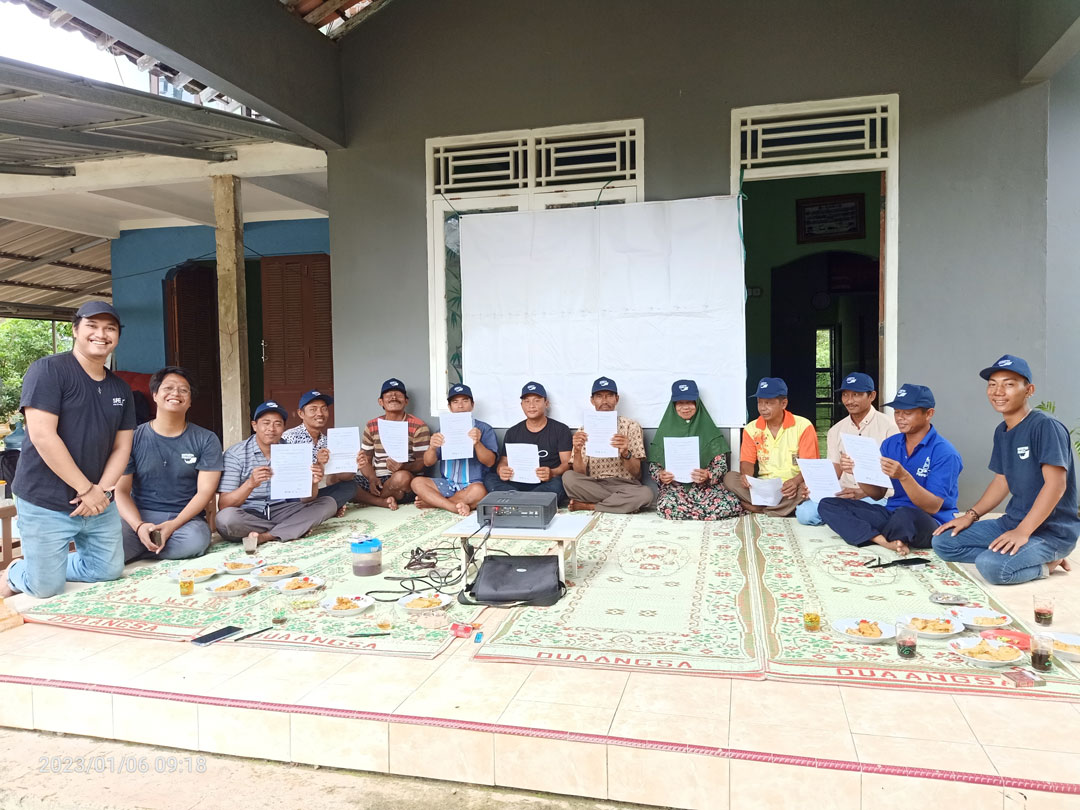Bright future for giant guitarfish and wedgefish?
Conservation is more than just understanding and protecting a certain area or species. It should also emphasize the people living in and alongside it. Fishers are the main character in our aim to better manage giant guitarfish and wedgefish in Karimunjawa National Park (KJNP), and their interactions with both critically endangered species matter most.

Custom-made hook used by spear fishers in Karimunjawa National Park to catch giant guitarfish and wedgefsih. Photo © Farahdhilla Fairus Afnany
The Elasmobranch Project Indonesia (EPI)’s team understood that most fishers in KJNP use mostly handline, speargun, gillnet, or fish trap (bubu). Out of the four gears, only bubu cannot catch giant guitarfish and wedgefish as bycatch. Although according to the fishers, sometimes demersal small stingray and bamboo shark species can enter the trap. On the other hand, despite still being considered rare, both giant guitarfish and wedgefish are possible bycatch for handlines and gillnets. It is considered so as all fishers said that even being able to catch one in a calendar year is already lucky enough!
However, there is a different story for spearguns. Speargun fishers (with or without the use of a compressor for diving) possess the capability to choose what fish they want to catch and take, therefore, the EPI team considered giant guitarfish and wedgefish as a valuable secondary catch to them instead of bycatch. There is an indication that these fishers highly expect to catch both species, with some fishers possessing a custom-made big-sized steel hook specialized for catching both species when encountered (read our first blog about how this gear is operated).
Between the end of 2022 and early 2023, the EPI team approached and invited some of the fishers across five islands in the national park that were previously interviewed to provide them with a workshop. It consists of a sharing session about the basic knowledge of shark and ray biology and conservation, along with information on present regulations and how fishers can contribute to their conservation through citizen science. The workshop also provided the fishers with the best practice to live-release a shark/ray and how to report the information to the EPI team. After the workshop, the fishers were given a voluntary pledge containing options for citizen science contributions to giant guitarfish and wedgefish conservation. The options included are: a. report information of any caught shark and ray to the EPI team and b, c, or d, which include option ‘a’ and to live-release giant guitarfish catch below 1 m, 1.8m, and all sizes, respectively. They were asked to pick one option that suited them best voluntarily.

Kemujan fishers after signing a pledge of support for giant guitarfish and wedgefish conservation. Photo © Farahdhilla Fairus Afnany
All fishers were willing to sign the pledge! Surprisingly, over one-third of them chose the b option. It means they are willing to report any shark voluntarily, and ray catches and live-release both giant guitarfish and wedgefish under 1 m long. Despite understanding that both species are threatened, and most fishers stated that both species contribute little to their income, catching the big individuals of both species feels like a jackpot to them. This is due to the adult of both species can weigh over 75 kg and have a considerably high market price. However, their willingness to support the conservation of both species on their own should be a bright start for giant guitarfish and wedgefish in the national park, right?
